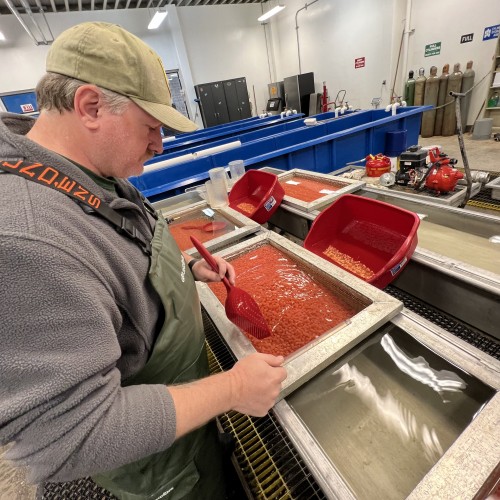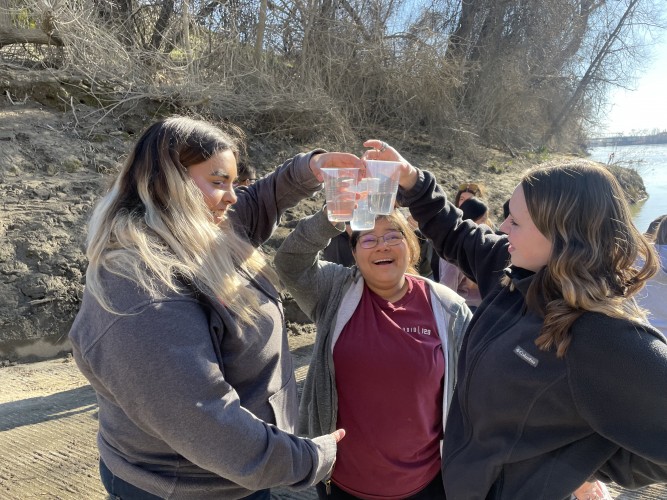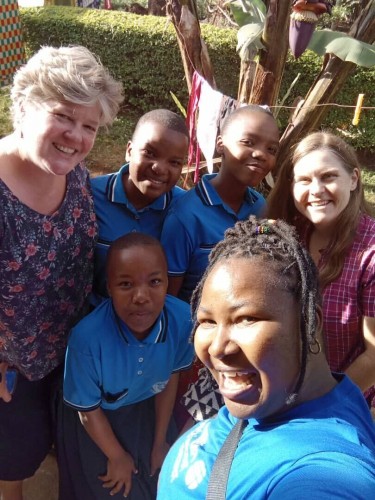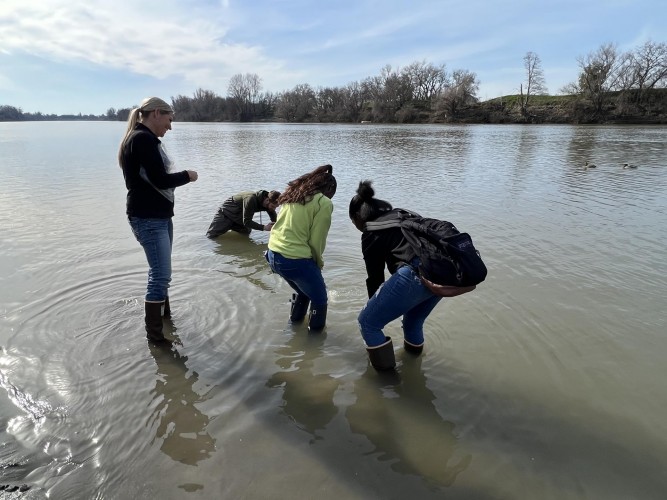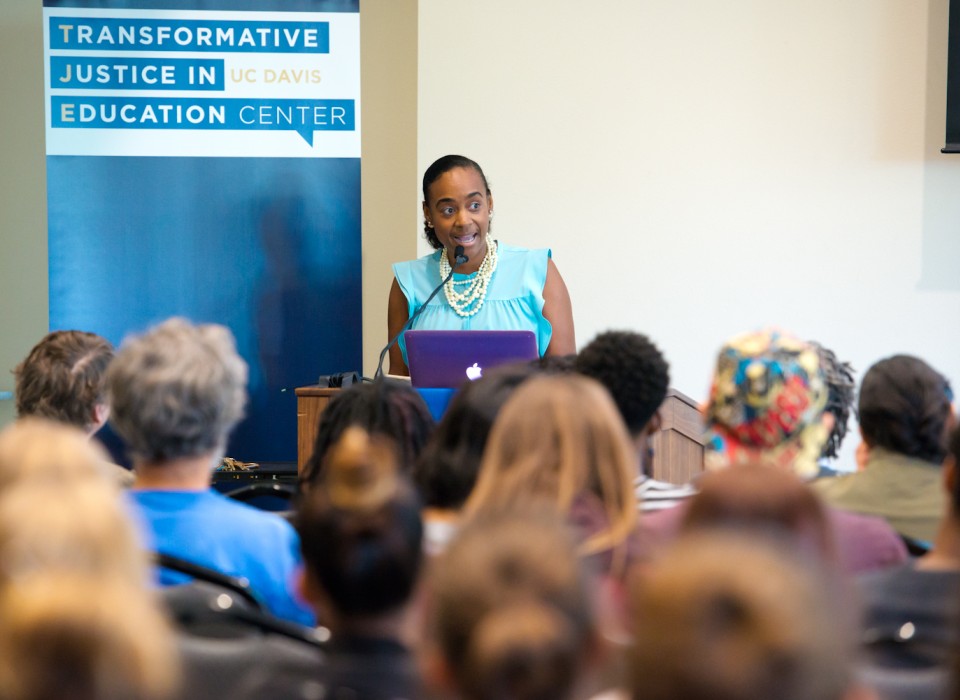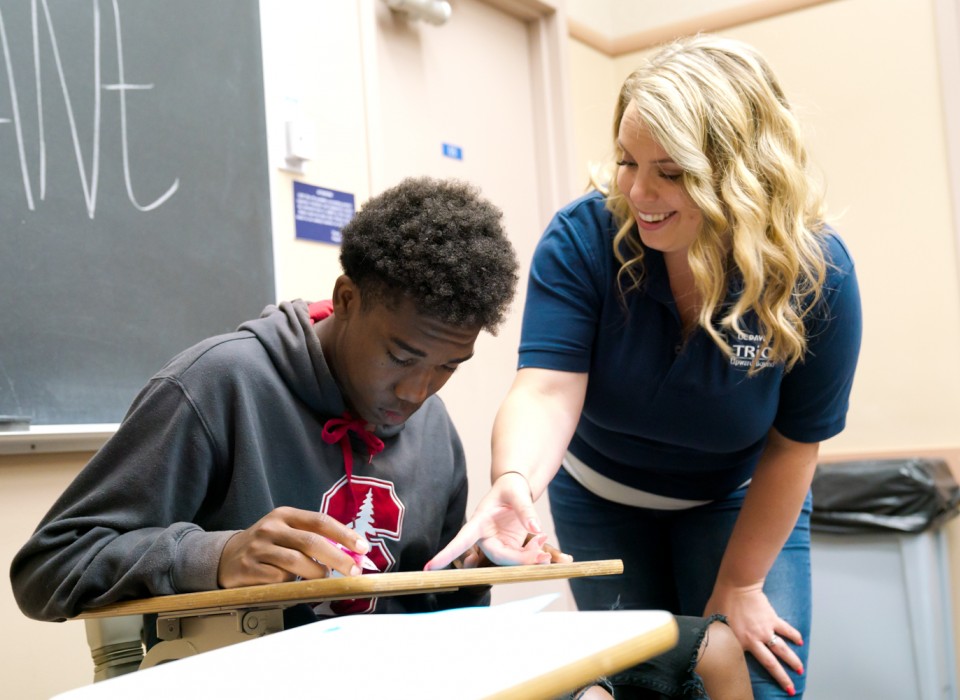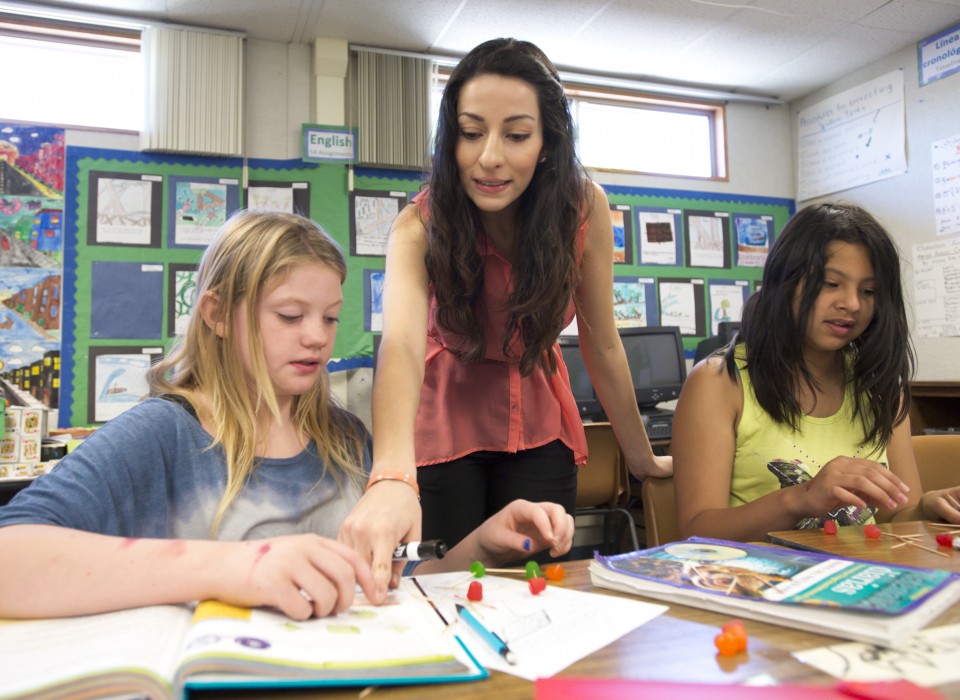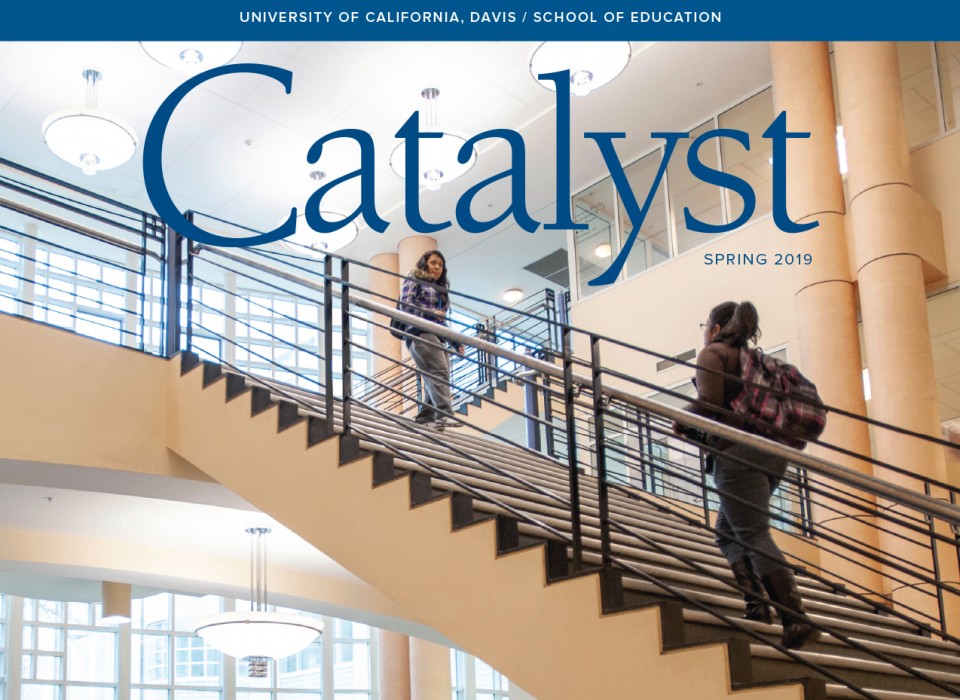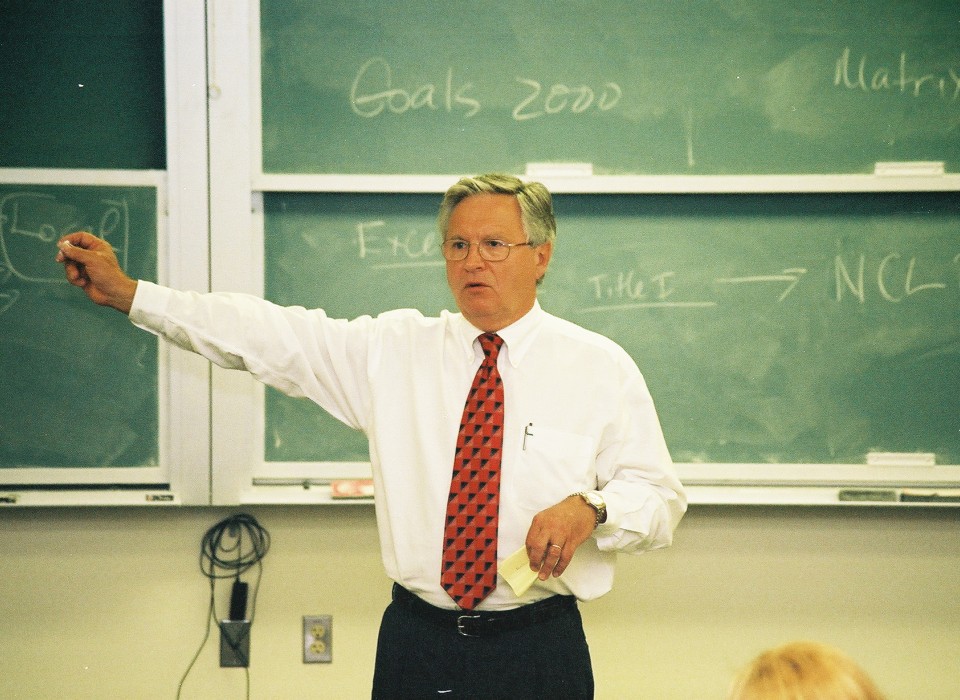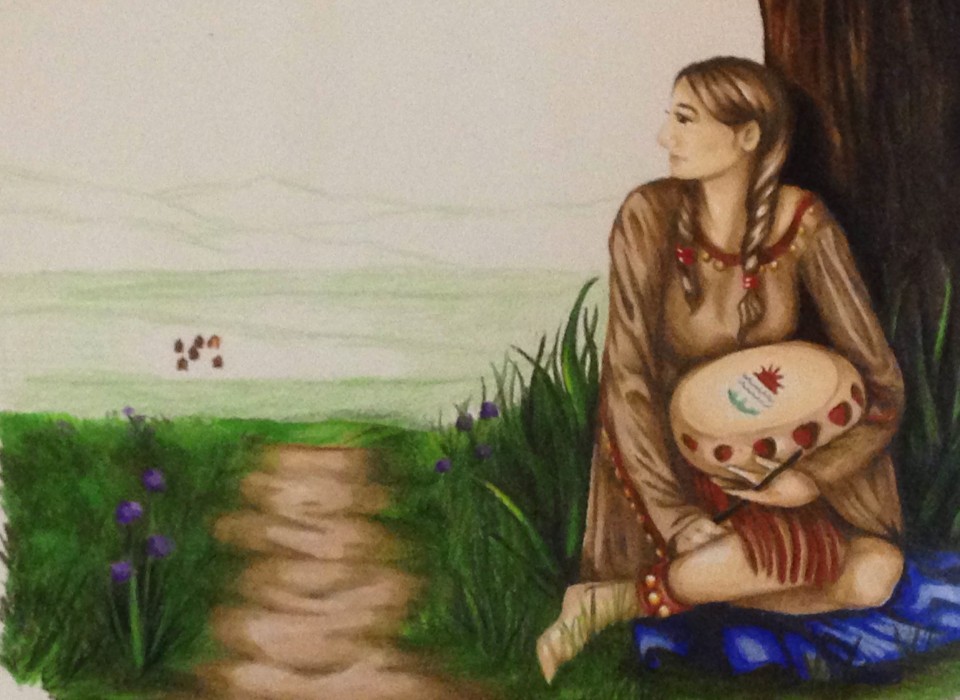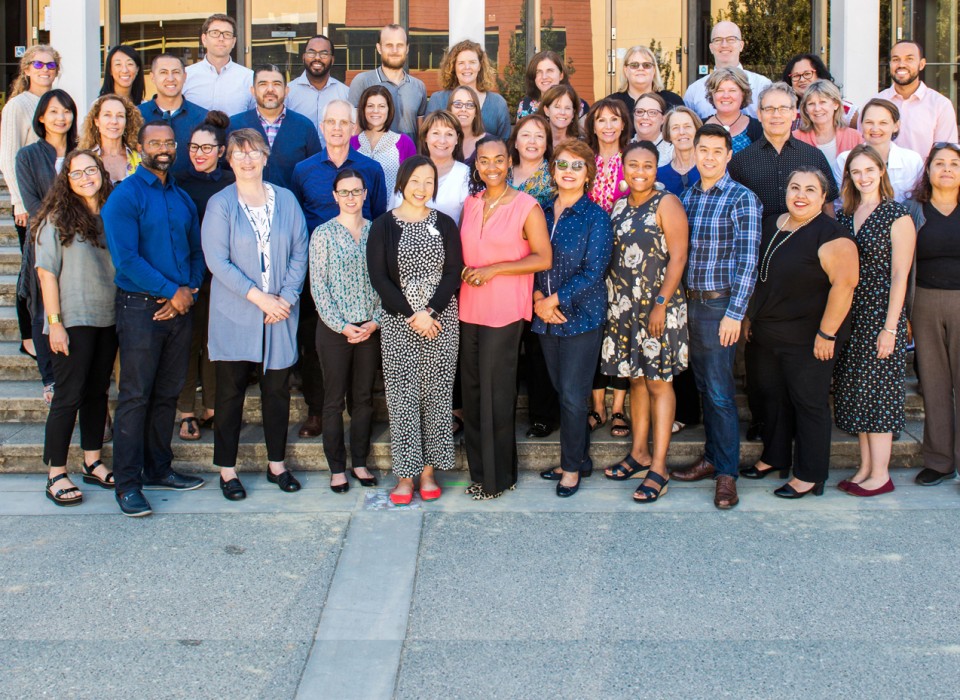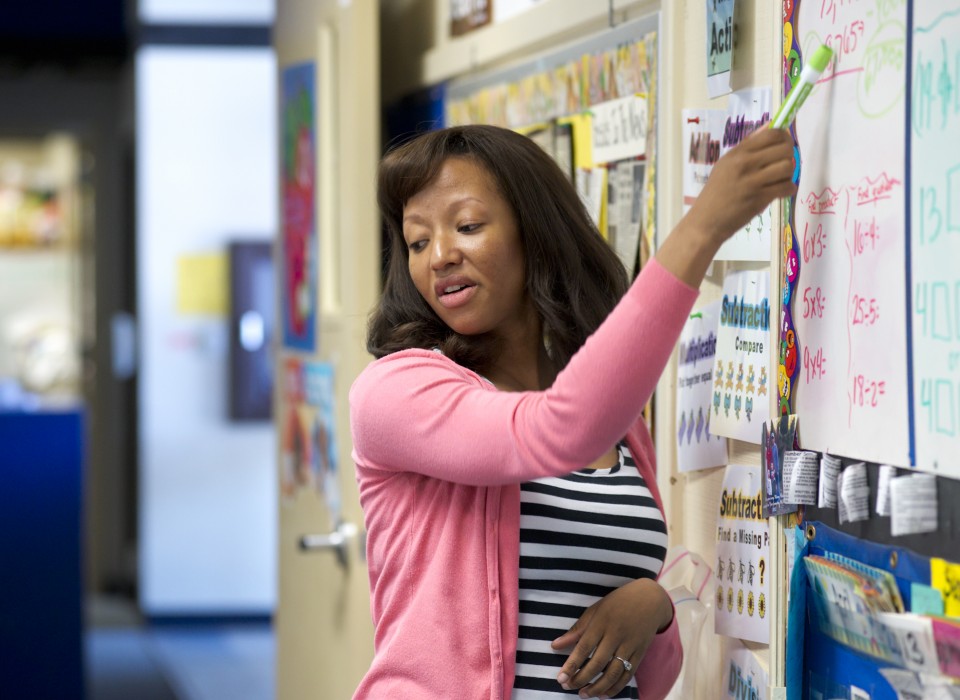YCCS Blog
2025 Field Trip to the Nimbus Hatchery
Spinning Salmon Students Experience Science in Action at Nimbus Hatchery
 Last week, Youth Education Program
Manager, Peggy Harte, was able to join a group of students
participating in the Spinning
Salmon program, taking their research questions and learnings
into the field with a visit to the Nimbus Fish
Hatchery.
Last week, Youth Education Program
Manager, Peggy Harte, was able to join a group of students
participating in the Spinning
Salmon program, taking their research questions and learnings
into the field with a visit to the Nimbus Fish
Hatchery.
Becca VanArnam Accepted for 2025 Delta Science Fellowship
 Congratulations to Becca
VanArnam, 2024-2025 Citizen Science in Conservation (CCSiC)
Fellow and Ph.D. student in Science and Agricultural Education,
on being awarded a 2025
Delta Science Fellowship! This program, funded by
California Sea Grant and in collaboration with agency partners
such as the Delta Stewardship Council, assists researchers in the
Sacramento-San Joaquin delta.
Congratulations to Becca
VanArnam, 2024-2025 Citizen Science in Conservation (CCSiC)
Fellow and Ph.D. student in Science and Agricultural Education,
on being awarded a 2025
Delta Science Fellowship! This program, funded by
California Sea Grant and in collaboration with agency partners
such as the Delta Stewardship Council, assists researchers in the
Sacramento-San Joaquin delta.
Project Update: GEAR UP Collaboration Launches Data Collection with FieldScope!
 We are excited to share a
significant milestone for the Spinning Salmon Project: the launch
of Year 4 of student-driven data collection in partnership with
the GEAR UP STEM Rural Valley Partnership! This collaboration is
energizing students with 21st-century tools, empowering them to
explore salmon ecology while supporting GEAR UP’s core goals:
We are excited to share a
significant milestone for the Spinning Salmon Project: the launch
of Year 4 of student-driven data collection in partnership with
the GEAR UP STEM Rural Valley Partnership! This collaboration is
energizing students with 21st-century tools, empowering them to
explore salmon ecology while supporting GEAR UP’s core goals:
North American Association for Environmental Education (NAAEE) Conference Recap
From November 5th-9th, members of the Center for Community & Citizen Science presented at the North American Association for Environmental Education Conference and Research Symposium (NAAEE) in Pittsburgh, Pennsylvania. Dr. Heidi Ballard hosted two presentations, one focused on her recently published literature review and another roundtable discussion about the center’s partnership with the Insight Garden Program. Youth Education Program Manager Peggy Harte and Ph.D.
California Association of Science Educators Conference Recap
Youth Education Program Manager, Peggy Harte, recently presented a short course on campus-based monitoring at the California Association of Science Educators’ (CASE) conference. Presenting alongside Chris Griesemer (Director of the Sacramento Area Science Project) the course highlighted ways educators can use their school campus to examine local phenomena and engage youth in nature monitoring programs through participatory science.
UC Davis Health Speaker Series
UC Davis Health Clinical and Transitional Science Center IAL Speaker Series: Engaging Adolescent and Young Adults (AYA) in Health Research
On November 11th, our Youth Education Program Manager, Peggy Harte, presented at the UC Davis Health Clinical and Translational Science Center IAL Speaker Series: Engaging Adolescent and Young Adults (AYA) in Health Research. This course is part of a three-part series on Inclusion Across the Lifespan (IAL) in Clinical Research. The purpose of the session was to broadly inform researchers and staff about the NIH’s Inclusion Across the Lifespan policy.
Celebrating California’s 2024 Biodiversity Day
 As part of California’s 30×30
initiative—a state-wide effort to conserve 30% of our land and
coastal waters by 2030—Biodiversity Day has become a weeklong
celebration where both professional and budding
naturalists from across the state come together to document
as much biodiversity as they can by contributing to community
science.
As part of California’s 30×30
initiative—a state-wide effort to conserve 30% of our land and
coastal waters by 2030—Biodiversity Day has become a weeklong
celebration where both professional and budding
naturalists from across the state come together to document
as much biodiversity as they can by contributing to community
science.
Environmental Superheroes of the ELA Classroom Podcast Series
 The Environmental Superheroes
of the ELA Classroom podcast collection highlights
stories of California TK-12 educators who teach reading, writing,
listening, and speaking through the lens of environmental
literacy and justice, giving a glimpse into what this type of
work might look like in TK-12 classrooms.
The Environmental Superheroes
of the ELA Classroom podcast collection highlights
stories of California TK-12 educators who teach reading, writing,
listening, and speaking through the lens of environmental
literacy and justice, giving a glimpse into what this type of
work might look like in TK-12 classrooms.
The Center’s Peggy Harte co-developed these podcasts and snapshots with other CAELI members, Tara Kajtaniak and Cheney Munson.
Feature: Spinning Salmon in California WaterBlog
Peggy Harte, UC Davis Center for Community and Citizen Science, and Abigail Ward, UC Davis Center for Watershed Sciences, team up in California WaterBlog to share about the collaboration between scientists and schools in the Spinning Salmon in the Classroom project.
Project Update: Training Presents Drafted Environmental Education to Support Clear Lake Stewardship
Inspiration and next steps
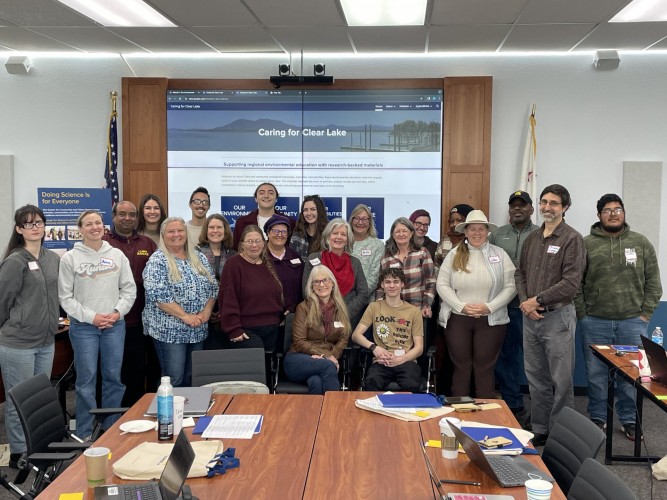 In March, the UC Davis Center for
Community and Citizen Science and Center for Regional
Change facilitated a two-day training in Lakeport
with educators and partners from across the region as
part of the Caring for
Clear Lake project. The training is a milestone for the
two-year project, approved by Blue Ribbon Committee for the
Rehabilitation of Clear Lake and funded by the California Natural
Resources Agency.
In March, the UC Davis Center for
Community and Citizen Science and Center for Regional
Change facilitated a two-day training in Lakeport
with educators and partners from across the region as
part of the Caring for
Clear Lake project. The training is a milestone for the
two-year project, approved by Blue Ribbon Committee for the
Rehabilitation of Clear Lake and funded by the California Natural
Resources Agency.
Project Update: Connecting Classroom Content in Spinning Salmon Field Trips
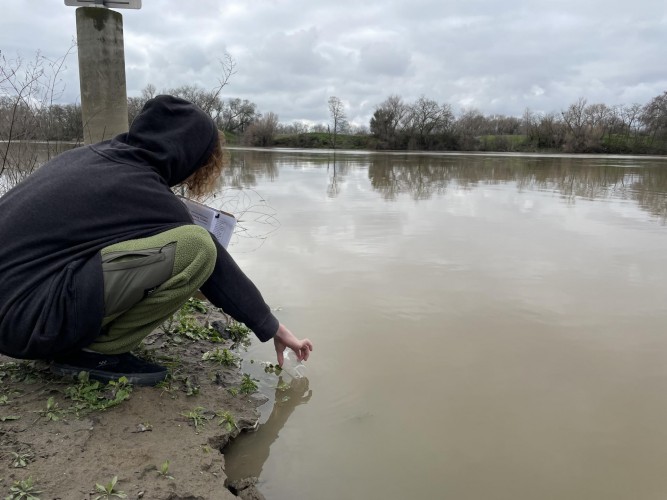 “Bye, Spaghetti!” waved one high
schooler as a tiny Chinkook salmon, so named Spaghetti, swam out
of a plastic cup and into the murky Sacramento River.
Across the boat ramp at Riverbend Park in Oroville, students
said their farewells to the alevin in their own cups. This
was the last chance for students to get an up close of the fish
they spent raising in their classroom over the last 6 weeks.
“Bye, Spaghetti!” waved one high
schooler as a tiny Chinkook salmon, so named Spaghetti, swam out
of a plastic cup and into the murky Sacramento River.
Across the boat ramp at Riverbend Park in Oroville, students
said their farewells to the alevin in their own cups. This
was the last chance for students to get an up close of the fish
they spent raising in their classroom over the last 6 weeks.
FREE Training: Environmental Education for Clear Lake educators
Saturday, March 30, 2024
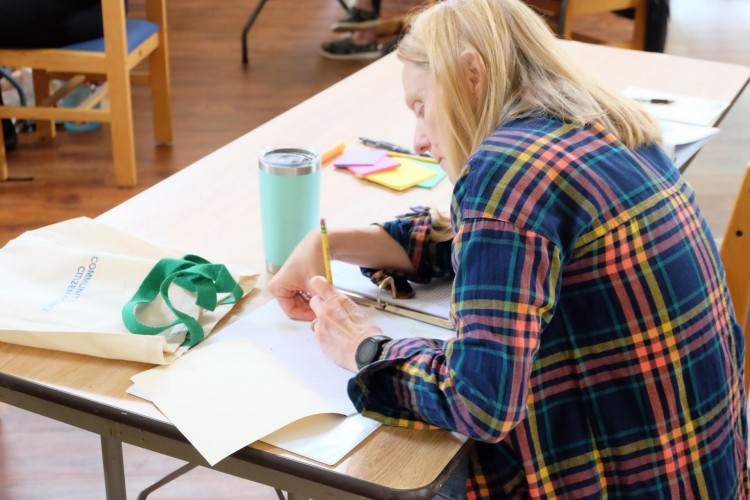 Saturday, March 30, 2024
Saturday, March 30, 2024
8:30 AM – 4:00 PM
Lake County Office of Education (Kesey Room), 1152 S Main St,
Lakeport
Register here
OPTIONAL March 29, 2024 (field day)
10:00 AM – 2:00 PM
Rodman Preserve
Project Update: Elementary Students Connected to Forest Managers through Data
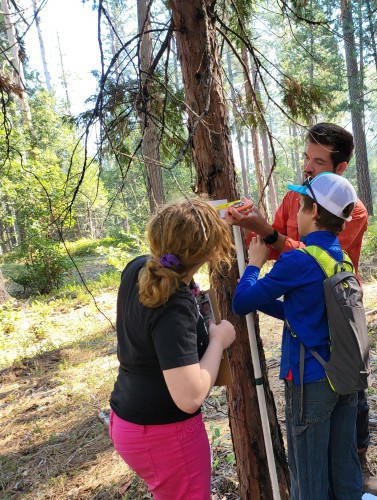 After 4+ years of collaboration and
intensive project work, the Our Forests Project is entering a
phase of analysis, product development, and sharing with a wide
range of audiences. Our Forests is an NSF DRK-12-funded
Youth-focused Community and Citizen Science (YCCS) collaborative
project between our center and our community partner – Sierra
Streams Institute.
After 4+ years of collaboration and
intensive project work, the Our Forests Project is entering a
phase of analysis, product development, and sharing with a wide
range of audiences. Our Forests is an NSF DRK-12-funded
Youth-focused Community and Citizen Science (YCCS) collaborative
project between our center and our community partner – Sierra
Streams Institute.
Project Update: The Eggs Have Arrived! Spinning Salmon Year Three
Deepening our collaboration and community connections
The Center for Community and Citizen Science has been collaborating with a broad coalition of researchers working to understand the complex puzzle of Thiamine Deficiency Complex (TDC) impacting California’s Central Valley salmon populations.
H.E.A.L.(ing) the Watershed
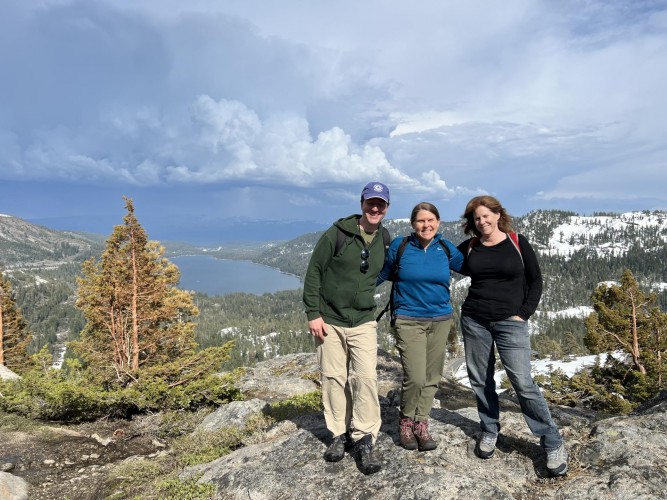 In May, the Center’s Youth
Education Program Manager, Peggy Harte, joined teachers from
throughout northern California as they came together to celebrate
and share their learnings as participants in the year-long
professional development program, H.E.A.L. (Health,
Environmental Awareness and Literacy).
In May, the Center’s Youth
Education Program Manager, Peggy Harte, joined teachers from
throughout northern California as they came together to celebrate
and share their learnings as participants in the year-long
professional development program, H.E.A.L. (Health,
Environmental Awareness and Literacy).
Project Update: Net-Working with the Clear Lake Hitch
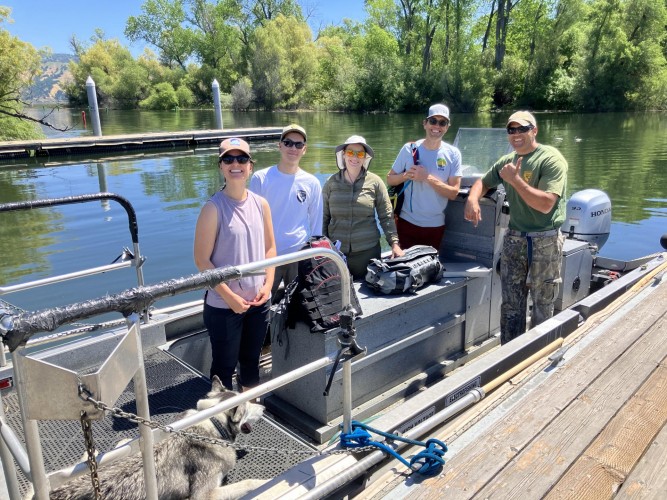 What’s the best way to get to know
Clear Lake? A boat ride, of course!
What’s the best way to get to know
Clear Lake? A boat ride, of course!
Not just any boat ride. We recently joined California Department of Fish and Wildlife (CDFW) as staff conducted the last electrofishing survey of the season. These surveys are one of many community-wide efforts to monitor Clear Lake hitch populations, which is a culturally important species to Tribes and endemic to Clear Lake.
Project Update: Field Trips Wrap Up Another Successful Year of GEAR UP Partnership
Starting a collaborative community and citizen science project with high schools is no small feat. Try starting it during the pandemic. That’s what we did with the Center’s collaboration with GEAR UP STEM Rural Valley Partnership Spinning Salmon in the Classroom project. After managing a year of distance learning in 2021 and piloting in-person content in 2022, we had so much we were excited to do this year.
From California to Tanzania and Back Again
Creating an educational and culturally-relevant environmental monitoring program for youth in northeast Tanzania
Could Community and Citizen Science not only support Science AND English teachers to teach in hands-on ways, but also help to feed students in Tanzania schools? Based on our recent collaboration, the answer is Yes!
Project Update: Field trips connect to classroom learning
Spinning Salmon in the Classroom Project
It’s a cold February morning at River Bend Park in Oroville. We’re standing with UC Davis Center for Watershed Sciences’ Carson Jeffres, waiting patiently for the bus to arrive from Red Bluff High School. A truck towing a boat backs down the boat ramp where we’re waiting to meet the high school students that have participated in the Spinning Salmon in the Classroom project this winter.
Designing for Science Learning in Schools by Leveraging Participation and the Power of Place through Community and Citizen Science
This post was originally featured as a part of the Community for Advancing Discovery Research in Education’s project spotlights. This Spotlight features DRK-12 collaborative projects, provides insight into the affordances and challenges of partnering with multiple organizations, and offers advice for those considering a collaborative proposal. Click here to visit the project Spotlight.




